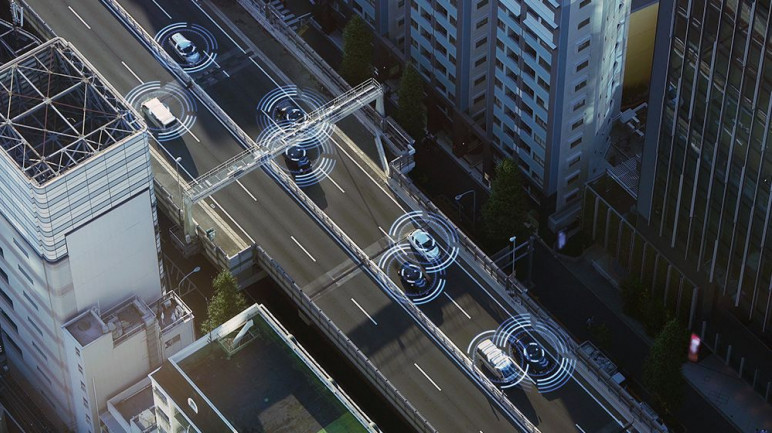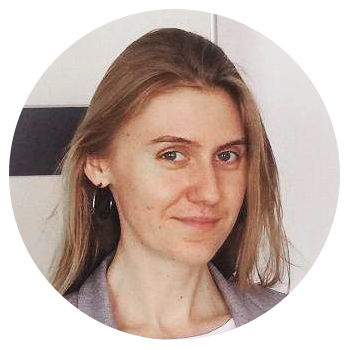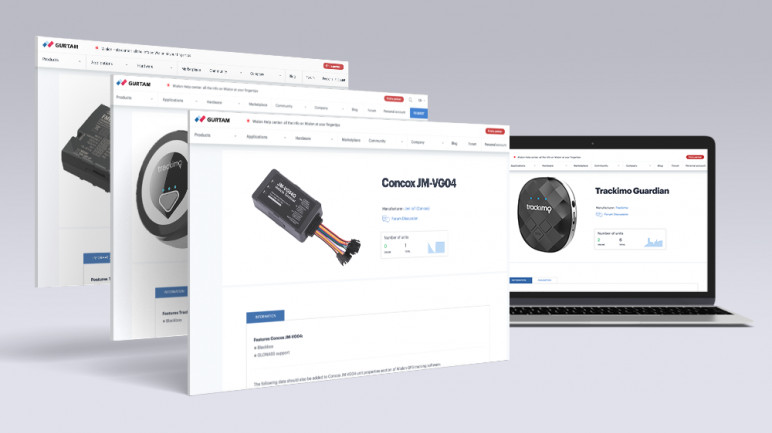2020 was an extraordinary year that forced many businesses to adapt to a quickly changing environment. While COVID-19 disrupted every industry in the past year, the crisis forced companies to revamp their business strategies to overcome current difficulties and generate revenue growth in the future. Add to this a rapidly evolving telematics industry and wider adoption of new technologies in it – and you will quickly understand the level of confusion that many had at the end of 2020.
We talked with hardware device manufacturers about how the past year’s turbulences have reshaped 2020, the trends they observe in the telematics and IoT industry this year, and how current challenges motivate them for future successes.
What are the top 5 trends in telematics hardware development to dominate in 2021?
1. Video monitoring
![Sergey Kachan]()
Sergey Kachan, Founder and CTO, BITREK
Studying the current state of affairs, I was surprised at how rudimentary this tool [video monitoring] remains in GPS vehicles tracking. Compare it with video surveillance for stationary objects where video cameras are taken for granted and constitute an obligatory part of security systems.
In telematics, video monitoring is irregular and often boils down to trivial video recording of everything in a row. It doesn't work for transport.
No one can handle the recording of thousands of hours of video from hundreds of cameras. Despite mobile communication networks’ development, current capacities are often insufficient to transfer such volumes in an acceptable quality. A user needs to get an image of a specific event at a specific moment. This is the value customers will pay for. Still, not many companies provide the service.
So far, this market is open for growth.
![Jens Berthelsen]()
Jens Berthelsen, Global Partner Alliance Manager, Hikvision
5G is being rolled out across the world, and we believe that 5G technology opens up new opportunities in the video security and telematics industries. The greater bandwidth and lower latency of 5G make the regular mobile transmission of high-quality images possible.
In the forthcoming 5G networks, wireless cameras embedded with Artificial Intelligence (AI) will proliferate, and will enable intelligent, rapid detection of security issues and help support more efficient security and transport business operations.
Another key trend is that users expect uninterrupted performance from their fleet camera systems, regardless of season, the weather, and certainly the time of day. It’s vital to have devices that can respond effectively to capture clear images, no matter what time of day or night or how bad the weather is.
Nowadays, a low-light imaging technology that provides colorful images in dark environments and at night is becoming popular in the security industry. Customers have shown a preference toward cameras with color imaging 24/7. More front-end cameras are now equipped with low-light imaging technology to make sure they can “see” and reproduce image color both day and night.
And how do cameras ensure visibility in extreme conditions such as heavy rain, snow, fog, or smog? Industry professionals tend to choose thermal imaging that measures heat – or thermal radiation – to generate images from their field of view. With thermal imaging, the rendered image is far less affected by even the most light-obscuring of these conditions.
2. The BLE technology and wireless sensors
![Blazer Hou]() Blazer Hou, Sales Director, TOPFLYtech
Blazer Hou, Sales Director, TOPFLYtech
The BLE technology is becoming more and more mature and provides more opportunities for wireless sensors. Long-range transmission, a growing number of sensor connections, and simple wiring make IoT deployment easier than ever.
![Аlexander Kuzin]() Аlexander Kuzin, Head of Export Sales Department, Escort
Аlexander Kuzin, Head of Export Sales Department, Escort
We were the pioneers in this sector among fuel level sensors manufacturers but have always been sure of this technology’s inevitable success. Today, after two and a half years, our sales record speaks for itself. In many domains, wireless level sensors are already replacing their wired counterparts.
Therefore, today, Bluetooth sensors are a priority both in improving existing products and new R&D projects.
![Sergey Kachan]()
Sergey Kachan, Founder and CTO, BITREK
We can endlessly discuss the pros and cons of wireless solutions. Still, the facts speak for themselves: the number of [wireless] sensors I know has exceeded a couple of dozen, and BLE has been chosen as the basic data transmission technology.
Unfortunately, due to the incapacity of different manufacturers to agree, in practice, we use only the very tip of the iceberg or a couple of percent of the possibilities provided by the technology.
![Alexander Krupovich]()
Alexander Krupovich, Head of Operational Marketing Department, Teltonika
The number of Bluetooth sensors connected to our trackers is growing steadily. There are many sensors on the market, but beacon tags are what our clients most often install. They are followed by temperature and fuel level sensors. Wireless sensors dramatically reduce installation costs, and growing amounts of customers are moving away from wired sensors in favor of Bluetooth sensors. Teltonika has been investing in solutions of this kind for many years now. This year, we have significantly improved the quality of Bluetooth antennas on the first series' devices, and within a year, we will release our other trackers modified.
3. 2G and 3G to 4G LTE-M transition
![Blazer Hou]() Blazer Hou, Sales Director, TOPFLYtech
Blazer Hou, Sales Director, TOPFLYtech
2G and 3G networks are getting overloaded with a growing number of IoT devices in the network. 4G LTE-M network is a specific LPWA network option for IoT devices. Major carriers in the world have already deployed or are deploying the 4G LTE-M network. 2G and 3G networks will be phased out soon in developed countries. 4G LTE-M devices with 2G network fallback will replace the old 2G and 3G devices. End users and tracking service providers have to consider and follow this transition to save TCO.
![Alexander Krupovich]()
Alexander Krupovich, Head of Operational Marketing Department, Teltonika
One of the trends that started earlier and will continue is a smooth transition from 2G solutions to 4G/LTE. As predicted, moving away from 2G is not fast. It is true that since 2021, Saudi Arabia is stopping its import of 2G devices and we are successfully supplying CITC certified LTE-Cat M1 equipment there. But so far, not many countries have joined the initiative, that's why customers don’t rush to replace their 2G devices. But the share of 4G/LTE devices is growing, and this growth is predicted to continue this year.
4. Eco Driving
![Pavel Shunkin]()
Pavel Shunkin, Business Development Director, Navtelecom
Eco Driving is a safe and economic concept that allows a business owner to quickly identify its pain points and the causes of its losses and eliminate them.
![Аlexander Kuzin]() Аlexander Kuzin, Head of Export Sales Department, Escort
Аlexander Kuzin, Head of Export Sales Department, Escort
Trending Eco Driving will only develop with the introduction of additional sensors and the improvement of algorithms. If yesterday it was necessary to motivate drivers, today we see heavy demand from insurance companies. Tomorrow, Big Data will be essential for autopilots and all automakers. We can only guess how the technology will go, but we already observe positive dynamics here.
5. Growing complexity and convergence
![Sergey Kachan]()
Sergey Kachan, Founder and CTO, BITREK
The list of tracking functions is expanding. The initial task of locating an object and getting access to its movements’ history fades into secondary roles, while many other tasks are emerging.
Now a GPS tracking device is turning into a powerful digital hub that collects information from dozens of sensors, controls actuators, exchanges data with external GPS tracking systems, and integrates with the tires – or all that combined.
Over the past year, the number of vehicle models integrated with onboard CAN buses has exceeded the previous years’ number.
![Pavel Shunkin]()
Pavel Shunkin, Business Development Director, Navtelecom
In the future, the car’s electronic equipment will only develop. The tracker's ability to receive and process data from the CAN bus without the use of third-party equipment will become its integral attribute.
How did COVID-19 influence the manufacturing process and supply chain of telematics device manufacturers?
![Sergey Kachan]()
Sergey Kachan, Founder and CTO, BITREK
2020 made us rethink traditional supply algorithms. The collapse of supply chains leads to a situation when suppliers do not meet deadlines, and some even refuse to deliver. As a result, we received a complete restructuring of supply chains and a change of suppliers.
If earlier, for example, we had one supplier of one component, now we are forced to look for several to not find ourselves in a situation of not getting any.
Naturally, production time increases. We had to replace the element base, which has led to a change in the hardware and software components, increasing the cost of developing and testing equipment.
Of course, these factors increased warehouse stocks and triggered a constant search for alternative options for suppliers. In 2021 this will not only remain but also grow.
The distance will augment, the delivery time will increase, and, unfortunately, the number of failures may also increase, affecting the cost of components.
Clients have to sacrifice functionality for the sake of the price of the device. And we must give them what they ask for.
![Аlexander Kuzin]() Аlexander Kuzin, Head of Export Sales Department, Escort
Аlexander Kuzin, Head of Export Sales Department, Escort
The coronavirus has enormously influenced the whole situation. We have begun to develop our distributors’ networks both in Russia and abroad in an even more focused manner. For both sales departments, this is a priority today.
After all, air logistics has become more expensive, so our partners’ warehouses stocks’ optimization is the primary trend of both the past and the new year.
We will now always work under conditions of total uncertainty, so we have strengthened the logistics department and continue to do so.
On the side of production business processes, we have multiplied the suppliers’ network and began to purchase components with large quotas. An increase in warehouse stocks of both components and finished products is what we have already done and continue to do in different product areas.
![Alexander Krupovich]()
Alexander Krupovich, Head of Operational Marketing Department, Teltonika
The changes affected almost all industries, including telematics. But this did not prevent us from launching a new factory in early 2020 and hiring more than a hundred new employees throughout the year, which is only for production. In the third quarter of 2020, sales began to recover rapidly, and the factory opening helped us improve product quality and shorten delivery times for our customers.
When it comes to components supply, we had to face some challenges, but we did not give up. Some problems were solved; others turned into opportunities. As for international network development, the pandemic could not prevent us from growing: we successfully opened new offices globally.
Which new products and services do you consider developing in 2021 and why?
![Blazer Hou]() Blazer Hou, Sales Director, TOPFLYtech
Blazer Hou, Sales Director, TOPFLYtech
We’ll focus on asset tracking in 2021. We have launched two new products:
- second-gen solar-powered asset tracker TLP2-SFB with BLE 5.0 for better asset tracking;
- TLW2-12B trailer tracker with multiple inputs, outputs, and a big backup battery that helps business owners better protect their assets.
![Alexander Krupovich]()
Alexander Krupovich, Head of Operational Marketing Department, Teltonika
It is the beginning of 2021, and we have already launched new products and services:
- FMP100, a tracker in the cigarette lighter;
- a large-scale update of FOTA WEB, our system for remote firmware and configuration updates on our devices;
- DualCam, which helps clients, in addition to events from the tracker, receive photos and videos on these events. Additionally, media files can be simply requested via a command from the server.
![Pavel Shunkin]()
Pavel Shunkin, Business Development Director, Navtelecom
In 2021, we are focusing on:
- new models of trackers that support work in 4G LTE networks;
- simple and reliable models with minimal basic functionality for the mass market.
![162Jens Berthelsen]()
Jens Berthelsen, Global Partner Alliance Manager, Hikvision
Overall, we will continue to:
- increase the processing power and intelligence of our products and solutions;
- improve the low light imaging technology, which is now in high demand in all markets;
- work on technological convergence. It is a crucial trend because a converged solution means easier linkage and management. For example, if an alarm goes off, the system can automatically link that alert to the nearest camera’s output. Users can observe the whole situation in the monitoring center.
- develop convergence of different types of devices. For example, an access control device can measure the temperature, while an intercom device has an access control function, and so on.
![Аlexander Kuzin]() Аlexander Kuzin, Head of Export Sales Department, Escort
Аlexander Kuzin, Head of Export Sales Department, Escort
In 2021, we will work on:
- A wireless weight monitoring system.
- An environmental monitoring ecosystem (sub-brands – Sokol and Natlogger). Here we have already achieved success, but the scope of practical applications is so vast that we still do not see all the niches where it can work.
- Wireless sensors for monitoring the safety of goods. We have several existing solutions and will continue to develop them because the community’s attention, especially at international exhibitions, is excellent. More long-lasting solutions will be trending here for sure.
![Sergey Kachan]()
Sergey Kachan, Founder and CTO, BITREK
The main directions of our work will be:
- Equipment rent. The new socio-economic model of the sharing economy seems to change attitudes towards property and consumption around the world definitively. Starting with real estate and transportation, we move on to sharing umbrellas and heating in homes. Gradually, some elements of this economic model penetrate our segment.
- I believe that in the coming years, at least several segments of the market will gradually shift from the sale of equipment towards a service where the hardware itself will be leased along with a SIM card, monitoring service, a dispatch center, and so on. This approach will largely neutralize the sales cost of equipment. The inhibiting factor in the development of such a model is a significant initial investment. In this aspect, our company, as a manufacturer, is ready to support our partners who show interest in the program.
Video monitoring will be in trend in 2021. We see it in the interest in our products such as mDVR Bitrek. We plan to develop this product further.
Wrap-up
Even the leaders in the hardware manufacturing market expect 2021 to be no easier than the previous year. The existing difficulties concern every business area, from component supply to sales departments. However, even under such pressure, these companies manage to turn challenges into opportunities, discover new areas of development, and open new offices worldwide.
When it comes to the latest trends in the telematics industry in 2021, there are a lot of forces at play:
- growing demand for high-quality video monitoring, different from mere recording Now it is enhanced with Machine Learning algorithms for better object detection and asset tracking;
- the rapid development of wireless sensors and a global shift towards BLE as the de-facto standard in the industry (however, the transition is not so smooth as it would be expected);
- switching over to next-gen 4G and 5G networks, and their current co-existence with 2G and 3G;
- massive adoption of fleet safety systems, such as Eco Driving;
- a quickly developing complexity of telematics solutions, their increasing functionality, and more in-depth interaction with other systems.
To remain competitive in the coming decade, hardware manufacturers will carefully plan their investments and adopt the right technology mix.














 Blazer Hou, Sales Director,
Blazer Hou, Sales Director,  Аlexander Kuzin, Head of Export Sales Department,
Аlexander Kuzin, Head of Export Sales Department, 
.png)



